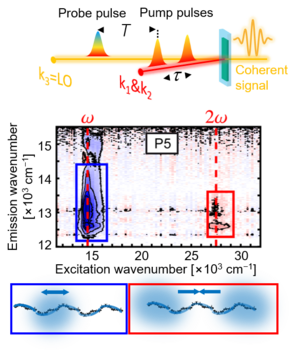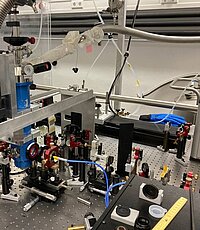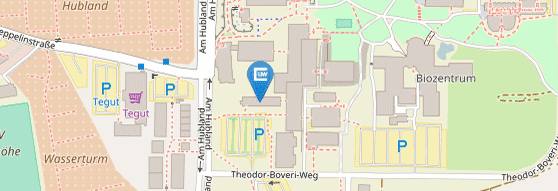Light-induced energy transport and many-body interactions

Interesting phenomena, such as coupling and thus the energy transport between quantum mechanical states are usually inaccessibly hidden in the data of pump–probe experiments. If one adds more laser pulses to the laser pulse sequence which excites the system and systematically scans the corresponding time delays, the complete response function of the quantum system can be visualized in a multidimensional data set. This is the approach of multidimensional spectroscopy.
In this project, we develop special pulse sequences for multidimensional spectroscopy, which allow us to study the structure, dynamics, correlation and energy transport between electronically excited states in molecular and supramolecular species as well as nanocrystals. In doing so, we detect either coherent signals using a spectrometer or fluorescence as a system response. The methods we have developed give us exclusive spectroscopic access to the static and dynamic properties of many-body complexes, so-called "multiexcitons", allowing us to address the following questions: On what time scale do two excitons merge? How strong are the Coulomb interactions between multiple excitons in a quantum dot? What is the character of exciton diffusion through a polymer strand?
A thesis in this project can cover many areas of work. The focus is on the planning and execution of time-resolved experiments, which requires the use of lasers and pulse shapers. Depending on the topic of the thesis, the following areas of work may be added:
- Two-dimensional spectroscopy with coherent signal detection in pump–probe geometry
- Multidimensional spectroscopy with fluorescence detection
- Pump–probe spectroscopy of multiexciton dynamics
- Programming of a laser pulse shaper in LabVIEW
- Quantum dynamical simulations using MatLab
- Low-temperature measurements using a cryostat
- Assembly of optical setups
If you are interested and have further questions, please contact us!
Contact:
Dr. Stefan Müller, stefan.mueller@uni-wuerzburg.de
Literature for overview:
[1] P. Malý et al., Phys. Chem. Chem. Phys. 22, 21222-21237 (2020)
Completed theses
The topic of your thesis in our working group is always assigned based on the current research work in the laboratory. Therefore, it does not make sense to constantly post new open topics here. Just contact us! In order to get an impression of possible theses in this project, a selection of already completed theses is presented below.
Master thesis
Investigating exciton correlations in semiconductor nanocrystals with fluorescence-detected two-dimensional spectroscopy

The aim of this work was to study correlations between excitons in colloidal nanocrystals in a time-resolved manner. These correlations are observable only in the first 100 fs after excitation of the nanocrystals with a laser pulse, and their dynamics are of relevance for the development of quantum computers. For this purpose, an experimental setup for coherent 2D spectroscopy was used. To avoid overlap of non-resonant solvent contributions with the desired signals of these ultrashort dynamics, the fluorescence of the nanocrystals was used as an experimental observable. Furthermore, to better distinguish different signal contributions, a cryostat was integrated into the experimental laser setup so that samples could be cooled to 77 K. In addition, a suitable sample preparation for low-temperature measurements was developed and a lens system was set up to collect the fluorescence and focus it on the detector.


